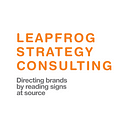The power or importance of Semiotics for Business.
Just Imagine! If you are in a business meeting and you just thumb up. Your employee knows that you have agreed to his/her opinions. This is how semiotics works in businesses. It is the key tool to ensure that intended meanings are understood by the person on the receiving end.
Marketing Semiotics play a key role in determining success and failure of any endeavour. The target audience can easily connect themselves to the company as applied semiotics for marketing includes logos, rituals, cultural symbols, colours, text, taglines and many other. It also helps the company to strengthen their reach to their customers. The various advertising and semiotics used in order to reach their audience are images, it is one of the most frequent symbols used in advertising. It clears the picture in the mind of the customer on what he/she is spending money on. For example, a picture of a skull and crossbones indicates the danger and if that is on any item, it becomes familiar to the customer that is dangerous. The next is text, it is also used to serve as a symbol in advertising in the same way image is used. It is not necessary that the symbols have to be visual in nature, which means that Sound can also be used by the advertisers as a symbol. For instance, a company can use some jingles to advertise and whenever that jingle plays the customer connects and become aware that the music is associated with particular company.
Leapfrog Strategy Consulting is one of the leading Indian semiotics agency, providing Semiotic research and brand solutions. According to the Founder of the company, Hamsini Shivakumar mentioned that the semiotic analysis helps clients in understanding with greater clarity which is hidden in plain sight. Semiotics analysis can be used at any stage of the strategic development process on its own or in conjunction with other methods. Semiotics Analysis is also useful for identifying new brand positioning opportunities, optimizing brand codes and communications across cultures and mapping brand positioning within a category.
